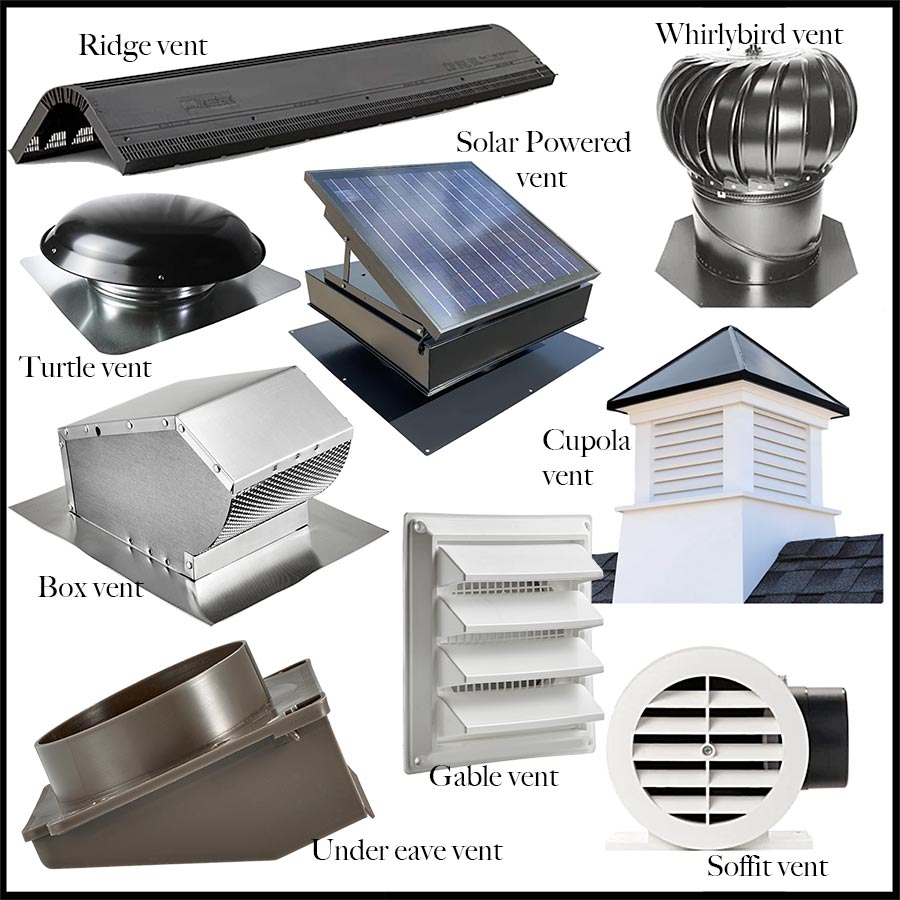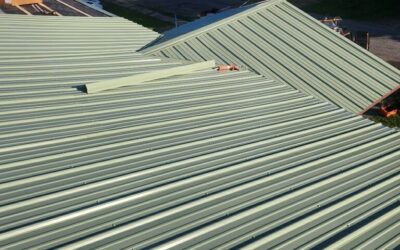

The Ultimate Roof Vent Guide: Types, Benefits, and Choosing the Right One
Proper roof ventilation is essential for keeping your attic—and your entire home—healthy, energy-efficient, and long-lasting. Without the right balance of intake and exhaust vents for a asphalt roof, heat and moisture can build up, leading to problems like mold, rot, high energy bills, ice dams, and premature roof failure. In this comprehensive guide, we’ll explore all major types of roof vents, how they work, and how to select the right system for your home.
1. Why Proper Roof Ventilation Matters
- Energy efficiency: During summer, attics can exceed 120°F, forcing HVAC systems to work harder. Ventilation lets hot air escape and pulls in cooler outside air, reducing energy costs.
- Moisture control: Bathrooms, kitchens, and daily living release moisture that can accumulate in the attic, causing mold, structural damage, and insulation degradation.
- Longevity of roofing materials: Proper airflow prevents heat buildup and moisture accumulation, which degrade shingles and wood.
- Ice dam prevention: In colder climates, ventilation keeps the attic cold, preventing snow melt and refreeze at edges.
Balanced ventilation requires intake vents at low points and exhaust vents at high points, maintaining a continuous airflow cycle.
2. Intake Vents: Bringing Air In
Intake vents allow fresh air to enter the attic from the eaves or low roofline. Common types include:
2.1 Soffit Vents
- Installed under eaves.
- Provide continuous airflow when paired with ridge vents.
Pros: Affordable, easy install, highly effective.
Cons: Can be blocked by insulation or debris.
2.2 Over-Fascia & Drip-Edge Vents
- Placed at roof edge under shingles.
- Ideal for homes lacking eaves/fascia ventilation.
Pros: Discreet, works where soffits aren’t possible.
Cons: Less airflow, installation complexity.
2.3 Rooftop Intake Vents (Shingle Vents)
- Installed near roof edges where soffits can’t be used.
Pros: Good for retrofits, hidden under shingles.
Cons: Limited airflow, still need exhaust.
3. Exhaust Vents: Letting Air Out
Exhaust vents at the roof ridge or top help expel hot, humid air. Main types include:
3.1 Ridge Vents
- Run along the peak of sloped roofs.
Pros: Balanced, hidden, no electricity needed.
Cons: Needs proper soffit intake; may leak in heavy weather.
3.2 Box Vents (Static or Louver Vents)
- Small, square vents across the roof near the ridge.
Pros: Low-cost, easy install.
Cons: Multiple may be needed; less effective than ridge vents.
3.3 Gable-End Vents
- Located on gable ends; provide intake or exhaust depending on wind.
Pros: Adds curb appeal, simple to install.
Cons: Wind-dependent, less effective on complex roofs.
3.4 Turbine (Whirlybird) Vents
- Wind-powered turbines that spin to draw air out.
Pros: No energy cost; effective in windy areas.
Cons: Noisy, ineffective in calm conditions.
3.5 Powered Attic Vents (Electric/Solar)
- Mechanically driven exhaust vents.
Pros: Highly efficient, thermostat or solar controlled.
Cons: Requires power; can backdraft HVAC systems; can be noisy; needs maintenance.
3.6 Cupola Vents
- Decorative rooftop vents, traditional in barns and classic homes.
Pros: Architectural flair; passive ventilation.
Cons: Low airflow; costly and mostly decorative.
Additional Passive & Active Vent Options
- Roof Louvers: Similar to box vents, usually with sloped louvered faces.
- Solar-Powered Vents: Use solar energy to power fans.
- Whole-House Fans: Circulate interior air into the attic and out through exhaust vents.
4. Comparing Vent Types at a Glance
| Vent Type | Intake/Exhaust | Energy | Noise | Cost | Best Use Cases |
|---|---|---|---|---|---|
| Soffit Vent | Intake | Passive | None | Low | Paired with ridge exhaust |
| Over-Fascia/Drip-Edge | Intake | Passive | None | Low–Mid | Homes without eaves |
| Roof Intake Vent | Intake | Passive | None | Mid | Retrofit ventilation |
| Ridge Vent | Exhaust | Passive | None | Mid–High | Whole-roof passive airflow |
| Box/Louver Vent | Exhaust | Passive | None | Low | Small attics or supplementary exhaust |
| Gable Vent | Intake/Exhaust | Passive | None | Low | Simple roofs, aesthetic ventilation |
| Turbine Vent | Exhaust | Passive | Med | Mid | Windy areas needing extra ventilation |
| Powered Attic Vent | Exhaust | Active | Med | High | Extreme heat; precise airflow control |
| Cupola Vent | Exhaust | Passive | None | High | Barns, classic homes, decorative only |
| Solar-Powered Vent | Exhaust | Active | Low | High | Off-grid or eco-conscious homes |
| Whole-House Fan | Whole-house | Active | High | High | Whole-home cooling in moderate climates |
5. Choosing the Right Vent Combination
Balance is key. The best roof ventilation systems draw cool air in through intake vents like soffit or over-fascia vents, and exhaust hot, moist air through ridge or powered attic vents.
- For New Roofs: Go with a ridge vent and continuous soffit vents.
- For Retrofits: Add shingle or drip-edge intake vents and combine with box or powered vents.
- For Complex Roofs: Use a mix—gable and box vents can support tricky rooflines.
Proper attic ventilation not only protects your roof but also reduces energy bills, improves comfort, and extends the life of your entire home.

 (440) 307-2060
(440) 307-2060




